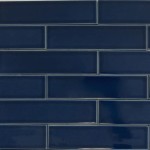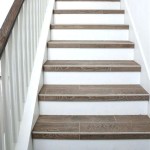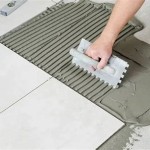Can You Put Vinyl Tile Over Linoleum Flooring in a Bathroom?
The bathroom is a high-traffic area that requires a flooring material that is both durable and moisture-resistant. Linoleum and vinyl tile are two popular choices for bathroom flooring, offering various advantages and considerations. While replacing linoleum completely is an option, installing vinyl tile directly over existing linoleum might seem like a time-saving and cost-effective solution. However, before embarking on this project, it is crucial to understand the feasibility and potential challenges associated with this approach.
Benefits of Installing Vinyl Tile Over Linoleum
Installing vinyl tile over existing linoleum can present several benefits, including:
- Cost-effectiveness: Removing existing linoleum can be a time-consuming and labor-intensive process, potentially increasing renovation costs. Installing vinyl tile over existing linoleum can be a cost-effective alternative, minimizing labor and disposal expenses.
- Time-saving: Installing vinyl tile over existing linoleum can significantly reduce project duration compared to complete flooring removal and replacement.
- Reduced disruption: This approach minimizes disruption to daily life, allowing for faster completion with less mess and inconvenience.
However, it's essential to remember that these benefits come with certain caveats.
Considerations Before Installing Vinyl Tile Over Linoleum
While installing vinyl tile over linoleum may appear convenient, several factors must be considered before proceeding. These factors can influence the feasibility and success of the project, impacting the longevity and aesthetics of the new flooring.
1. Condition of the Existing Linoleum
The foundation for a successful vinyl tile installation lies in the condition of the existing linoleum. Before installing vinyl tile, ensure the following:
- Surface stability: The linoleum must be firmly attached to the subfloor with no loose or buckling areas. Any loose or damaged areas should be repaired before proceeding.
- Smooth surface: The linoleum surface should be smooth and free from bumps, ridges, or significant imperfections. If unevenness exists, sanding or using a leveling compound may be necessary.
- Cleanliness: The linoleum surface must be thoroughly cleaned and free of any debris, grease, or adhesive residue. Cleaning with a suitable detergent and allowing it to dry completely is essential for proper adhesion.
If the existing linoleum fails to meet these standards, it is advisable to consider removing it completely and installing a new subfloor before proceeding with vinyl tile installation.
2. Thickness of Existing Linoleum
The thickness of the existing linoleum plays a vital role in determining the success of the installation. Vinyl tiles are typically thin, and installing them over thick linoleum can create a noticeable height difference between the bathroom floor and surrounding areas.
If the linoleum is too thick, it can also affect the levelness of the floor, introducing unevenness and a risk of tripping hazards. Consider using a thinner vinyl tile option or removing the existing linoleum entirely if the thickness is too significant.
3. Type of Vinyl Tile
Choosing the right type of vinyl tile is crucial for a successful installation over linoleum. Self-adhesive vinyl tiles offer a straightforward installation process and are generally suitable for smooth, stable surfaces. However, if the linoleum is in less than ideal condition, consider peel-and-stick vinyl tiles. These tiles offer greater flexibility and can better accommodate minor imperfections in the linoleum surface.
However, regardless of the vinyl tile type, it is crucial to prioritize quality products for optimal durability and longevity.
4. Adhesion and Durability
Proper adhesion between the vinyl tile and linoleum is essential for a secure and long-lasting floor. This is particularly important in bathrooms, where moisture can damage the flooring. Consider using a specialized adhesive designed for vinyl tile installation over existing flooring to enhance adhesion and create a stable bond.
Additionally, choose high-quality vinyl tiles that are specifically designed for bathroom use, offering increased water resistance, mold resistance, and durability to withstand heavy foot traffic and cleaning products.
However, even with proper installation and high-quality materials, the long-term performance of vinyl tile over linoleum may vary. It is essential to be aware of the potential for issues and be prepared to address them as needed.

How To Tile Over Linoleum Floors Correctly

Can You Tile Over Linoleum Flooring Maria Louise Design

Can You Tile Over Linoleum Flooring Maria Louise Design

How To Install Luxury Vinyl Tile Over Linoleum

How To Install L And Stick Tile Over Linoleum

Can You Lay Tile Over Linoleum Rubi Blog Usa

How To Lay Vinyl Floor In A Bathroom Dove Cottage

Can You Tile Over Linoleum Flooring Maria Louise Design

Should You Tile Over Vinyl Flooring Builddirect

How To Install L And Stick Tile Over Linoleum My Homier Home
Related Posts








